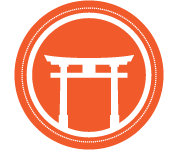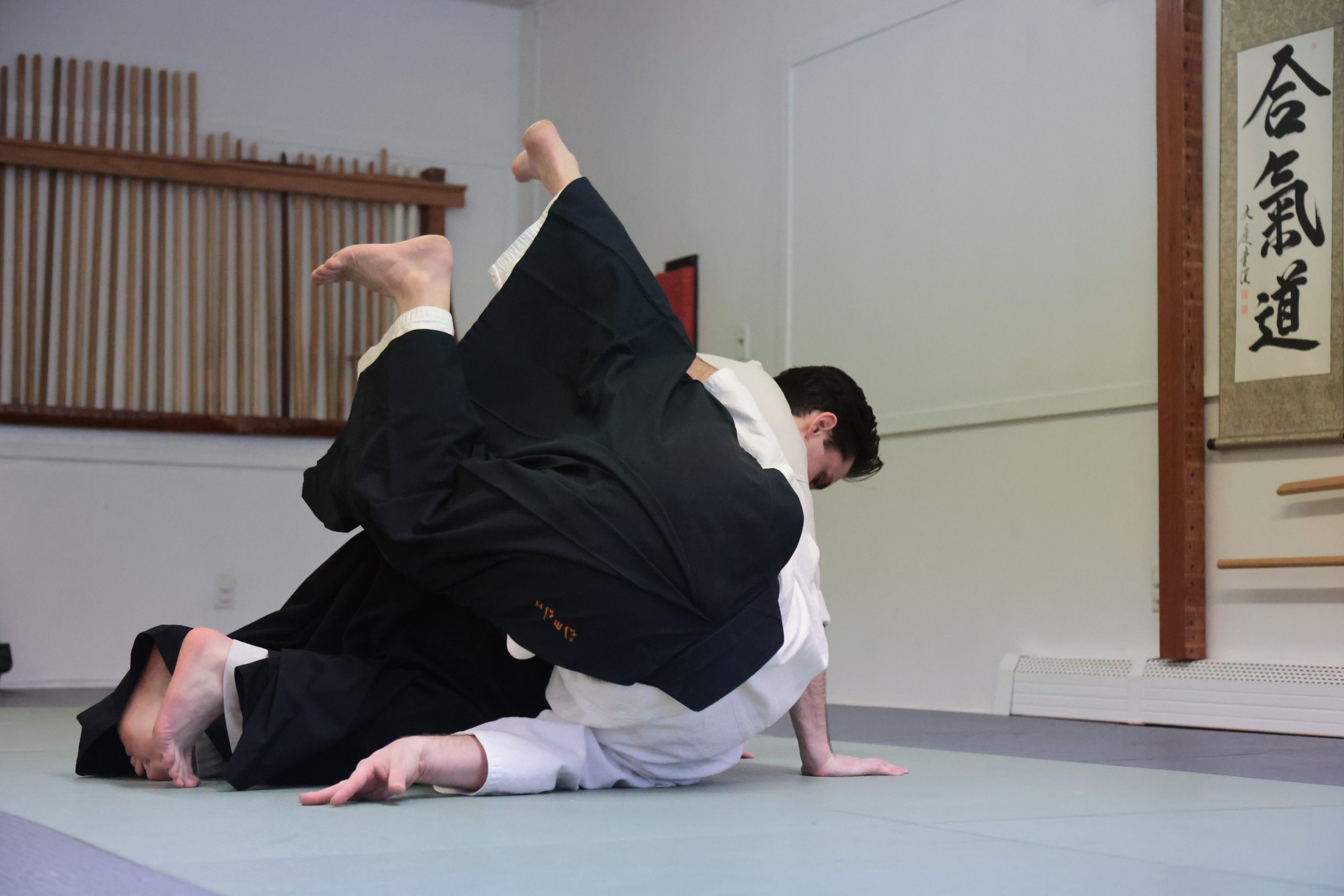Why Does Uke Fall?
Inryoku Volume 5 Issue 9
By Josh Paul, AOSB head instructor
In a routine aikido class, students pair off and assume the roles of nage and uke. The nage is commonly described as the defender—the one executing an aikido technique. Uke is commonly referred to as the attacker—the one striking or grabbing and falling in response to nage’s technique. But why does uke fall? When you are uke, are you thinking about why you’re falling?
In my practice, there are three basic reasons an uke falls: they need to, they want to, or they expect to. As uke, the best reason to fall is because you need to. Nage has taken continuous control of your balance and applied a technique. Consequently, you have no choice but to receive the technique and fall or get injured by resisting the fall. Under the best of circumstances, nage’s technique feels like nothing at all. As uke, you execute an intentional, continuous attack, and then you’re on the mat. The space in between is a confused flash.
Uke may also fall down because they expect to. You’ll often see this happen during a teaching demonstration. The sensei, moving slowly and deliberately, will pause in the middle of a technique to explain, and the uke falls. Or sometimes an uke will fall because they’re practicing with a senior student and assuming the senior’s technique will invariably work. Or something similar. When we fall because we expect to, it is because we’ve left the moment. We are practicing in anticipation of what will or should happen, not what is in fact happening. We lose the mindfulness—the meditation—of the practice and even risk injury. Launching ourselves into a high breakfall before nage is in the correct throwing position can result in dramatic collisions (I’ve seen it happen.)
Uke may also want to fall. This is a deliberate, intentional choice. It is not the product of a well executed technique or the consequence of anticipation. There are good reasons to intentionally choose to fall, like when practicing with junior students. Fully receiving their technique from start to finish helps their mind and body understand and remember the movements. When a senior uke allows their junior nage to finish their technique despite imperfections, they are helping their partner develop. It is difficult (perhaps impossible) for new students to focus on the nuances of ma ai (time and space) and kuzushi (taking balance) if they do not yet know where to put their hands and feet. And to constantly interrupt and correct is profoundly annoying and frustrating for any student, and it disrupts the meditation.
Choosing to fall is also important when practicing with children. For example, my 5 year old cannot throw me. He can create the shapes and do the movements of a technique, but I weigh 140 lbs more than him. Despite our pretensions about aikido’s universal applicability, physics persist. What gratification or accomplishment would he feel, and what lessons would I impart, if I didn’t fall when practicing with him? In these and other moments, when uke chooses to fall to teach and guide, it is not collusion or building false expectations. It is part of the pedagogy and part of the practice.
Wanting to fall isn’t always pedagogy. Sometimes it’s for the thrill and flash of a high breakfall. When we emphasize and prioritize graceful, dynamic, and acrobatic ukemi, there’s the potential to compromise the technique. Nage begins setting uke up for the fall, and uke isn’t thinking about their initial attack, reclaiming their balance or pursuing their attack. Both uke and nage begin thinking about the dramatic fall, not all of the necessary steps needed to create the conditions for uke to fall. In this context, too, it’s a question of do know why you are falling. Is your intention from the start to get to the flip?
So, why are you falling? Do you need to, expect to, or want to? Whatever the answer, are you doing it on purpose?




